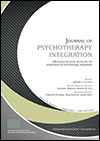Background
Advancements in research have confirmed that gut microbiota can influence health through the microbiota–gut–brain axis. Meditation, as an inner mental exercise, can positively impact the regulation of an individual’s physical and mental health. However, few studies have comprehensively investigated faecal microbiota following long-term (several years) deep meditation. Therefore, we propose that long-term meditation may regulate gut microbiota homeostasis and, in turn, affect physical and mental health.
Aims
To investigate the effects of long-term deep meditation on the gut microbiome structure.
Methods
To examine the intestinal flora, 16S rRNA gene sequencing was performed on faecal samples of 56 Tibetan Buddhist monks and neighbouring residents. Based on the sequencing data, linear discriminant analysis effect size (LEfSe) was employed to identify differential intestinal microbial communities between the two groups. Phylogenetic Investigation of Communities by Reconstruction of Unobserved States (PICRUSt) analysis was used to predict the function of faecal microbiota. In addition, we evaluated biochemical indices in the plasma.
Results
The α-diversity indices of the meditation and control groups differed significantly. At the genus level, Prevotella and Bacteroides were significantly enriched in the meditation group. According to the LEfSe analysis, two beneficial bacterial genera (Megamonas and Faecalibacterium) were significantly enriched in the meditation group. Functional predictive analysis further showed that several pathways—including glycan biosynthesis, metabolism and lipopolysaccharide biosynthesis—were significantly enriched in the meditation group. Moreover, plasma levels of clinical risk factors were significantly decreased in the meditation group, including total cholesterol and apolipoprotein B.
Conclusions
Long-term traditional Tibetan Buddhist meditation may positively impact physical and mental health. We confirmed that the gut microbiota composition differed between the monks and control subjects. The microbiota enriched in monks was associated with a reduced risk of anxiety, depression and cardiovascular disease and could enhance immune function. Overall, these results suggest that meditation plays a positive role in psychosomatic conditions and well-being.


